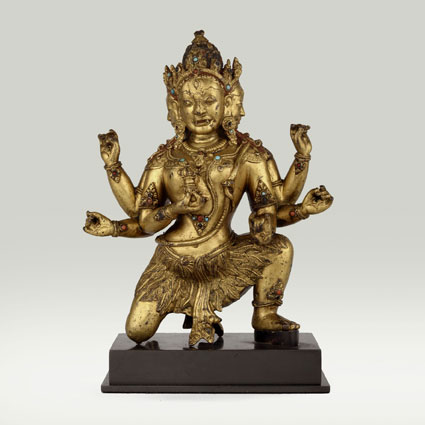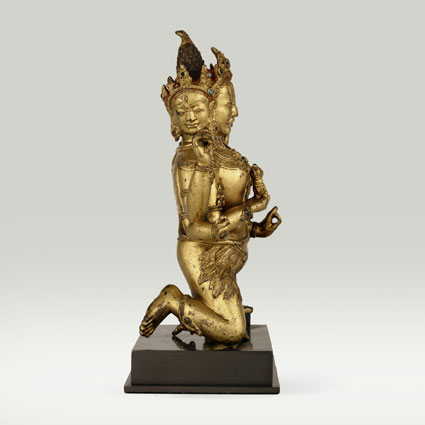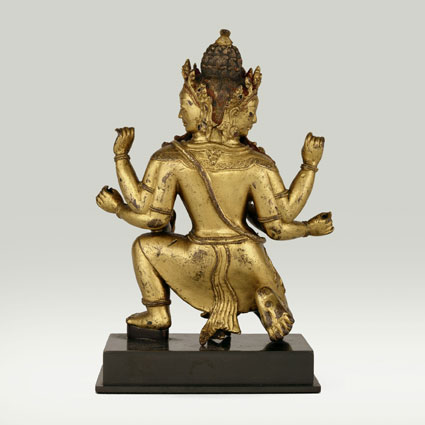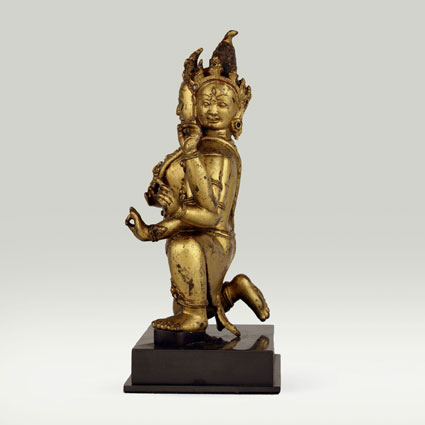ABS 021
Code: ABS 021
Country: Tibet (central)
Style:
Date: 1400 - 1500
Dimensions in cm WxHxD: 14.2 x 17.3 x 7.3
Materials: Gilt copper; inserted with turquoise and coral
Parnashavari
This three-headed and six-armed goddess is called Parnashavari in Sanskrit, and Lomagyuma in Tibetan. Her name translates as the “Leaf-Clad Wild Woman”. She is the mountain hermit who dispels ignorance and protects from epidemics.
Parnashavari is also identified as the twentieth of the twenty-one Taras, who specialises in the prevention and cure of all kinds of sicknesses thanks to her knowledge of the natural healing powers of herbs. She is dressed in an apron of leaves and bedecked with jewels.
She is both peaceful and wrathful at the same time. In the principal right hand, she holds a five-pronged diamond sceptre (vajra). With the principal left hand she displays the “threatening finger gesture” (tarjani-mudra).
The separately cast attributes of the remaining four hands have been lost. She would normally be holding a medicinal plant, an elephant-goad, a bow and an arrow.
Parnashavari belongs to the karma family of Buddha Amoghasiddhi, emphasizing the swiftness of the enlightened activities of the buddhas.
This three-headed and six-armed goddess is called Parnashavari in Sanskrit, and Lomagyuma in Tibetan. Her name translates as the “Leaf-Clad Wild Woman”. She is the mountain hermit who dispels ignorance and protects from epidemics.
Parnashavari is also identified as the twentieth of the twenty-one Taras, who specialises in the prevention and cure of all kinds of sicknesses thanks to her knowledge of the natural healing powers of herbs. She is dressed in an apron of leaves and bedecked with jewels.
She is both peaceful and wrathful at the same time. In the principal right hand, she holds a five-pronged diamond sceptre (vajra). With the principal left hand she displays the “threatening finger gesture” (tarjani-mudra).
The separately cast attributes of the remaining four hands have been lost. She would normally be holding a medicinal plant, an elephant-goad, a bow and an arrow.
Parnashavari belongs to the karma family of Buddha Amoghasiddhi, emphasizing the swiftness of the enlightened activities of the buddhas.






